(Written by William)
LEGO elements, especially bricks and plates, are often viewed as being incredibly square. They create great straight lines, but when it comes to angles, you often need to hunt down a specialized facet brick or wedge plate for the job. Well, what if I told you there are ways to angle your most basic elements easily?
The answer to this building challenge has to do with right triangles. These are triangles that have one 90-degree internal angle. These are the same triangles associated with the Pythagorean Theorem. I know what you’re thinking, “You mean geometry is important in real life?” Sure is! And it applies to LEGO building, so it’s extra important!
Fortunately, I won’t require you to pull out a dusty old math text. I’ll show you some simple applications of these triangles so you can get straight into building.
PYTHAGOREAN TRIPLES
Remember that theorem I mentioned before? Well, it gives an equation that can let us figure out the length of the third leg of any right triangle if we have the lengths of the other two. That’s neat and all, but what we are interested in is the Primitive Pythagorean Triples. These are sets of three numbers that are whole and can be applied directly to LEGO building.
The reason for this is that the LEGO system is built on exact measurements. This feature allows us to use LEGO elements themselves as measuring tools. There’s a reason why we refer to a brick as 1×8, since we use each stud as a measurement unit.
There are a lot of Primitive Pythagorean Triples, but I want to focus on some of the smallest since they will be the easiest to use with LEGO bricks. They are: (3, 4, 5), (5, 12, 13), and (8, 15, 17). The two smaller numbers in each set are the shorter legs of the triangle. The big number is the hypotenuse, or the angled leg of the triangle. It is the hypotenuse that is what interests us.
So, let’s apply it and see what happens. Take a baseplate and start in one corner. Count three studs along one side and place a round plate. Then go back to the same corner and count four studs along the other side and place another round plate. You need round plates since you can’t have the studs on the baseplate run into the piece you’re adding diagonally. Now try to put a plate that is five studs long and attach it to the two round plates. You’ll find that you can’t, what gives?
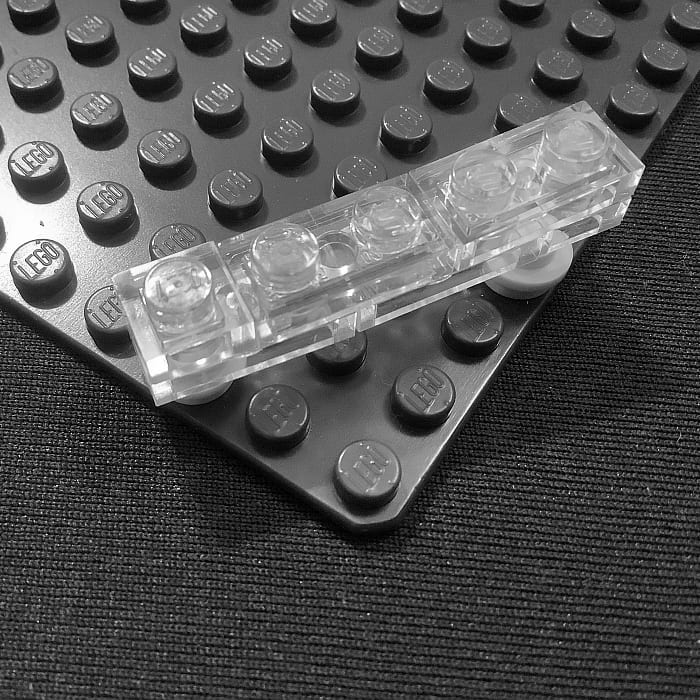
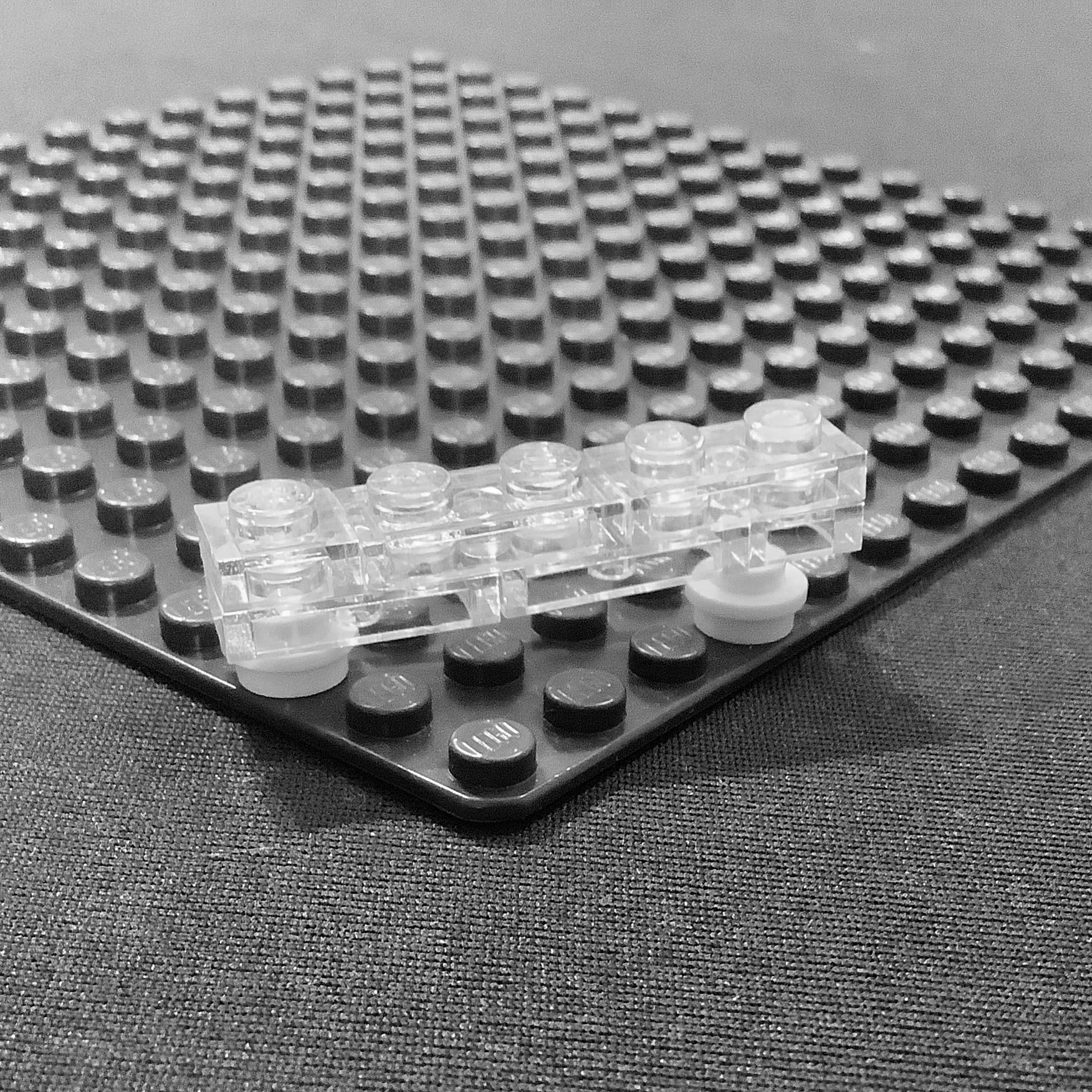
Remember how I said LEGO is built around a very specific system? Turns out you need to take into account the width of each stud as well as the space between studs. So, let’s try that again but instead of counting studs, we’ll count the spaces between studs.
Starting in the corner, we count three spaces between studs along one side. This puts us on the fourth stud so we add a round plate. Going back to the corner, we count four spaces between studs along the other side and place a round plate on the fifth stud. Now we attach a six-long piece over those plates and find it works! This works with any of the Primitive Pythagorean Triples. Just inflate all the numbers by one and it works.
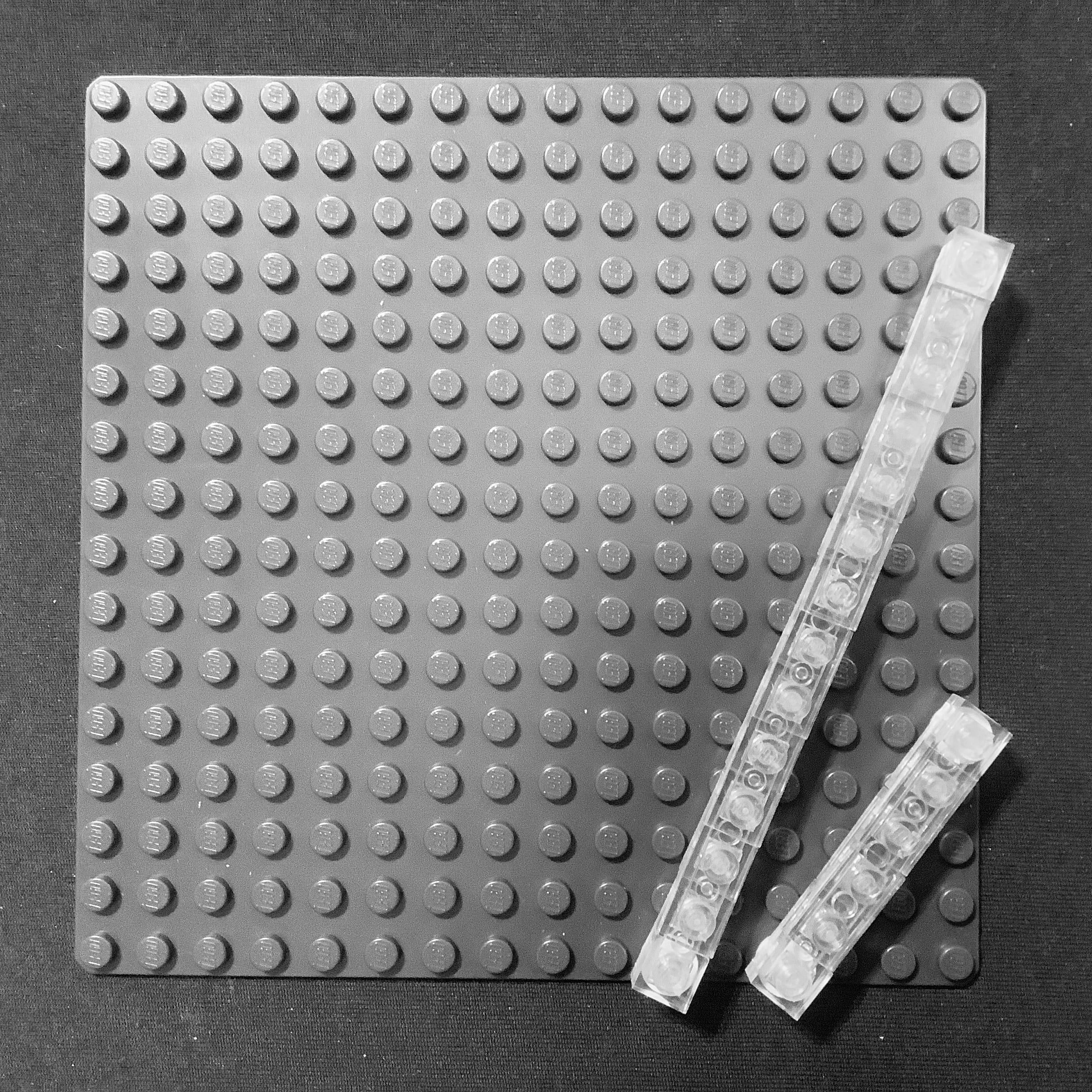
Another trick is that these triples can be expanded. If you multiply all the numbers of a triple by the same number, the triple will still work. So, you might be thinking, okay I’ll take my new 4, 5, 6 and multiply it by three, giving me 12, 15, and 18. This won’t work. You actually need to work with the original triple first before inflating by one.
So, if we take 3, 4, 5, and multiply by three, we get 9, 12, and 15. Now we can inflate by one to straighten out our measurements and get 10, 13, and 16. This works. Additionally, you can put round plates under your 16-long piece under the 6th and 11th stud, since those are the other multiples of the 3, 4, 5 triple.
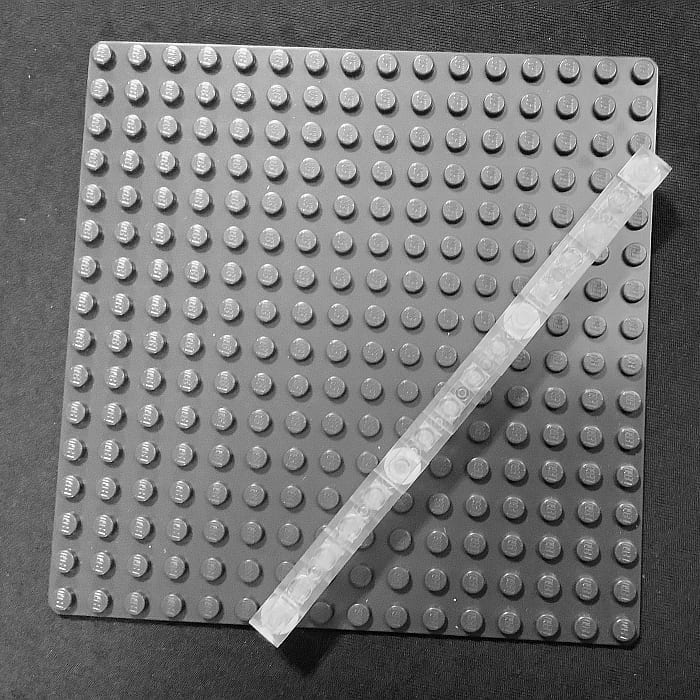
But what if you want to go a bit more freeform with your building? Let’s move on to another technique you can use.
USING THE HYPOTENUSE
Triangles have three points. This is where we like to have stud connections. The points will define what a triangle will look like. Fortunately, LEGO is naturally designed to make right triangles and, thanks to the concept of the Pythagorean Theorem, we know they are dependable. Given that information, we can now do something pretty cool.
Start in the corner of a baseplate. The stud in the corner is the first point of our triangle. Now count along one side any number of studs. For my example, I’ll choose 5. Now go back to the corner and count along the other side any number of studs. I’ll choose 9, just to keep things manageable. Counting the spaces between studs we get 4 and 8, which are not part of any triple. This gives us a hypotenuse we can’t easily measure.
Now I’ll grab something that makes the mirror opposite of the triangle I just outlined. Basically, I flip the numbers. The side that was 5 long is now 9 and the side that was 9 is now 5. Once I’ve done that, I just line up the hypotenuse sides and connect!
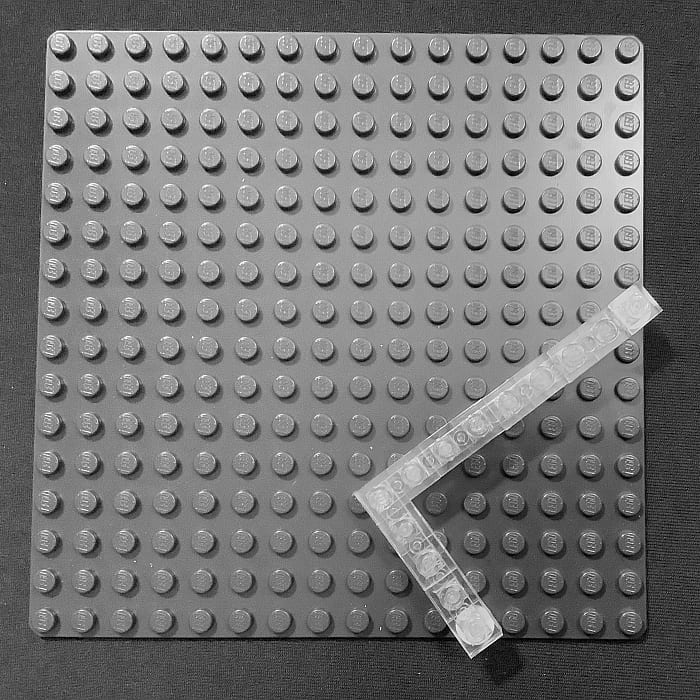
You can do this with any right triangle shape. Just make sure to have a mirror image of the first triangle if you want an angle. Otherwise, they just make a square. Same goes for if you make the short legs the same measurement, for instance 3 and 3. Putting another 3 and 3 triangle over it won’t angle anything.
The downside to this technique is that it relies only on two connection points, so it can be a bit fragile. Consider reinforcing the ends with rounded 1×2 plates to add back in some stability.
And that’s it! You have all the freedom to make whatever angle you like. If you like very subtle angles, make one of your triangle sides 2 studs, then the longer you make the other leg, the shallower the angle will be.
APPLYING WHAT YOU LEARN
We often say LEGO is great for building something square. That is especially true since right triangles have a very square component to them. That 90-degree angle allows us to expand into the world of odd directions.
Ideally though, if you are building something that requires a high degree of stability, I recommend using the Pythagorean Triples. It doesn’t give you the high level of control as the straight Hypotenuse method, but you’ll have an easier time making solid connections. And if your goal is a more decorative one, then creating inverted triangles and lining up their hypotenuses is the way to go. It is super flexible when it comes to design, but don’t expect it to hold together perfectly.
What do you think? Have you worked with triangles while building with LEGO? What tricks you use to get them right? And what do you think of the methods we discussed here? Feel free to share your thoughts and discuss in the comment section below!












